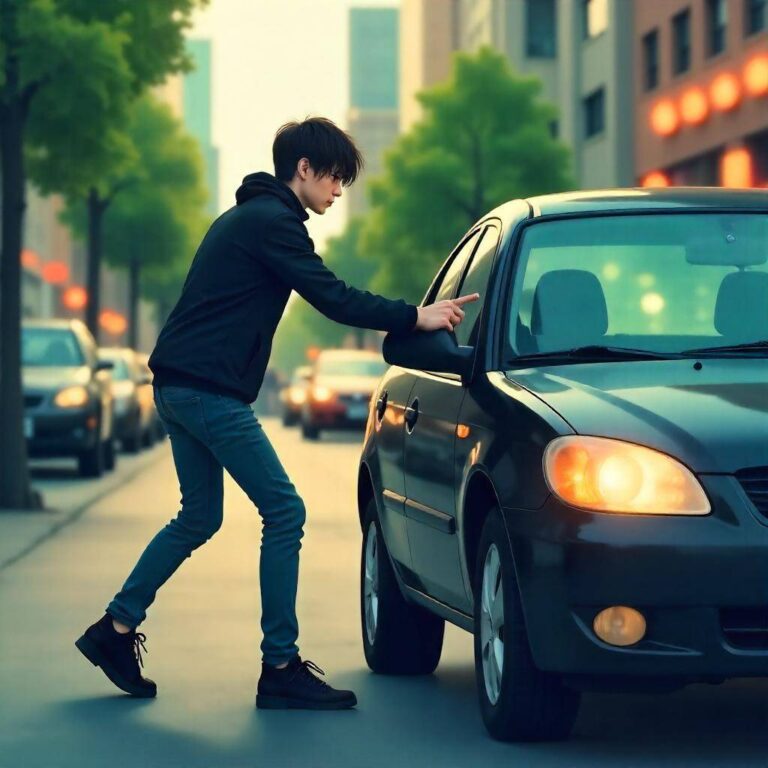Question from a reader:
Recently, while I was walking drunk, I accidentally bumped into a car that was parked on the sidewalk. The driver was nearby, and upon checking, I found that there was only a slight scratch on the car, and we ended up calling the police. The driver had turned off the engine and was talking outside the car,
but it was not a case of parking or unloading cargo. In this situation, how much fault would the pedestrian have? Also, when the insurance company later notifies me of the fault percentage, is it possible to reduce the pedestrian’s fault?
About the Fault Percentage When Bumping into a Car While Drunk
The incident happened recently when I accidentally bumped into a car parked on the sidewalk while walking drunk. After talking with the driver, I found that there was only a slight scratch on the car. The police were also called, and formal procedures were carried out. In such a situation, many people might wonder how much fault they would have and whether it is possible to reduce their fault when notified by the insurance company later. This time, let’s analyze this case from a legal perspective.
Organizing the Accident Situation
First, let’s organize the situation in which the accident occurred. It cannot be denied that my judgment was impaired due to being drunk. While being on the sidewalk might give the pedestrian a stronger position, various factors come into play in reality. The car that was parked on the sidewalk had its engine turned off, and the driver was outside the vehicle. In this case, since the vehicle’s driver was temporarily away from the car, there is a duty of care on the part of the driver when the accident occurred, but the pedestrian is also naturally required to exercise caution. Walking while drunk typically results in a lack of attention compared to normal conditions, so it cannot be said that there is no fault.
Understanding Fault Percentage
The fault percentage indicates how much fault each side had in an accident and is usually expressed as a ratio between the perpetrator and the victim. Under Japanese law, the fault percentage is generally based on the following criteria: 1. Pedestrian’s fault: If the pedestrian is drunk, their duty of care is considered to be less stringent, which likely increases their fault. 2. Vehicle’s fault: If the vehicle is stationary and the driver is absent, the fault on the vehicle’s side is generally considered to be minor. Based on such criteria, the pedestrian’s fault while walking drunk could be, for example, 70%, while the vehicle’s fault could be 30%. Of course, this varies depending on the specific circumstances, but generally, such ratios are often applied.
Notification from the Insurance Company and Reducing Fault
When a notification comes from the insurance company, the fault percentage will be indicated. At this stage, it is concerning whether it is possible to reduce one’s fault. To decrease the fault, it is necessary to consider the following points: 1. Collecting evidence: Gathering evidence that illustrates the circumstances of the accident (such as witness testimonies or photos of the accident scene) can serve as material to review the fault percentage. 2. Expert opinions: Consulting with traffic accident experts or legal professionals can provide new perspectives on the fault percentage. 3. Appropriate communication: Communication with the insurance company is also important. By clearly conveying your claims, you may gain understanding. As someone who studies law, I realize the importance of asserting my views to the insurance company. Particularly when there is fault on the other party’s side, effectively countering with solid evidence can be key to reducing fault.
The Impact of Being Drunk
Now, how the fact of being drunk affects fault is also a significant point. When inebriated, one’s judgment is inevitably impaired, leading to a greater fault. This is evident from the strict penalties established by law regarding drunk driving. In our daily lives, it is a well-known fact that “it’s better to avoid drunks.” Behaviors exhibited while drunk are often irrational and can lack consideration for those around them. If there are people nearby, they might stop you, but if not, you must make your own judgment.
Future Measures
It is also important to consider future measures to prepare for unexpected situations. While walking drunk should be avoided, if it happens, the following measures can be taken: – Use public transportation: Always use public transportation or take a taxi when drinking. – Have a friend take you home: Act with someone else and ask them to take you home when you are drunk. – Limit alcohol intake: Self-management is crucial, so be mindful not to overindulge. Reflecting on one’s actions is important to prevent accidents. One must not forget that being drunk can inconvenience not only oneself but also others.
Conclusion
Through this case, we have considered the fault percentage when being drunk on the sidewalk. While it is unavoidable that the pedestrian’s fault will be significant, it is possible to reduce that fault by firmly asserting one’s claims. By organizing the circumstances of the accident, collecting evidence, and consulting experts, one can obtain materials to assert their legitimacy. The law can be cold, but actual accidents and troubles often involve human emotions. Therefore, I feel that having legal knowledge can help protect oneself and those around them, even if just a little. Moving forward, I want to take responsibility for my actions and strive to prevent accidents.



